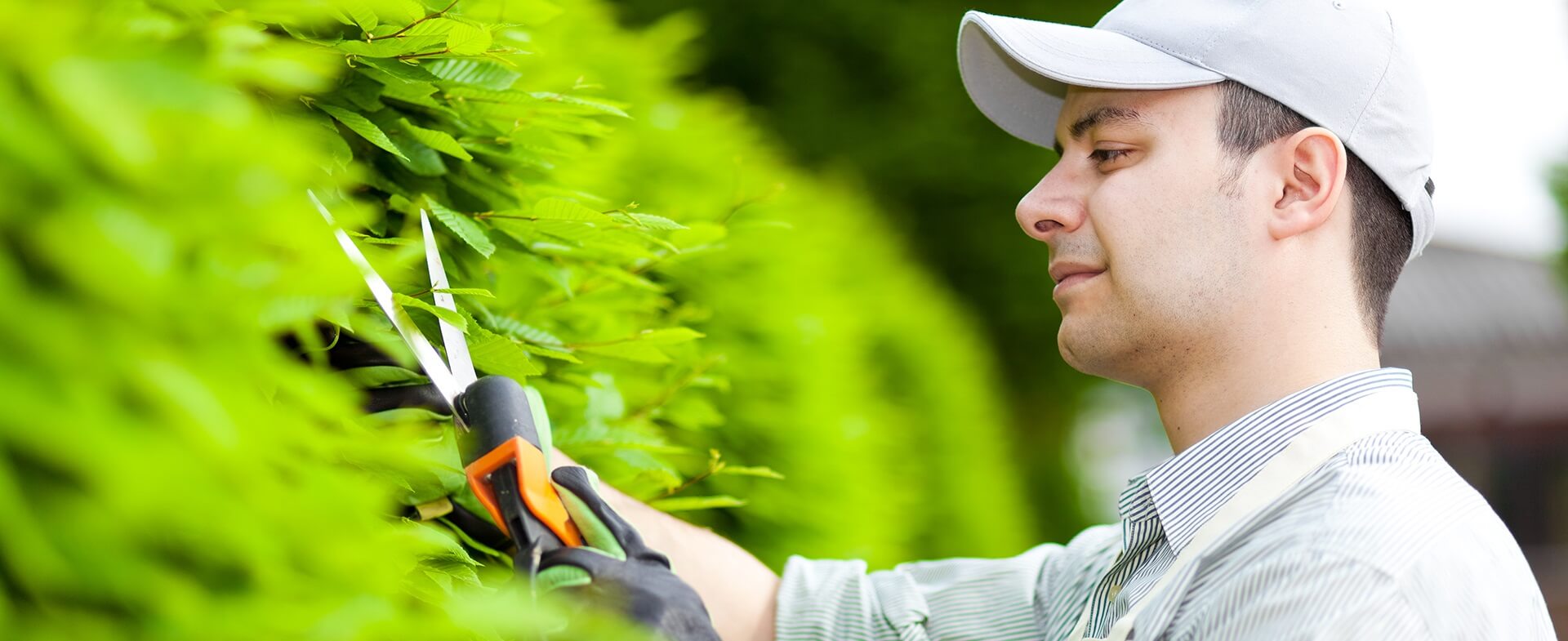3 Weed Control Tips Every Gardener Should Know
Posted on 18/08/2025
3 Weed Control Tips Every Gardener Should Know
Every gardener dreams of a lush, healthy, and weed-free landscape. However, unwanted weeds often invade flowerbeds, lawns, and vegetable patches, stealing nutrients from your beloved plants. Weed management can seem like a never-ending task, but with the right approach, you can keep your garden thriving and beautiful. This comprehensive guide shares 3 essential weed control tips that every gardener must know to maintain a healthy and vibrant garden all season long.
Why is Weed Control Important for Gardeners?
Understanding the significance of effective weed management is the first step towards maintaining a flourishing garden. Weeds compete with your plants for limited resources such as light, water, and nutrients. They can also harbor harmful pests and diseases, making it even more challenging to grow healthy plants.
Here's why weed prevention should be a top priority for every gardener:
- Enhances plant growth: Less competition means your plants can thrive.
- Improves garden aesthetics: Weed-free beds look more attractive and inviting.
- Reduces plant diseases: Weeds can be habitats for pests and pathogens.
- Minimizes manual labor: Effective weed control saves countless hours of weeding.
- Increases crop yields: Especially important in vegetable gardens.

Top 3 Weed Control Tips Every Gardener Should Implement
Now that we've established the importance of weed control strategies, let's dive into the three crucial tips you should implement today to reduce and prevent weeds in your garden.
1. Mulching: The Gardener's Best Defense Against Weeds
One of the most effective weed prevention methods is mulching. Mulch acts as a barrier, blocking sunlight from reaching weed seeds and thus preventing their germination. It's also excellent for improving soil quality, conserving moisture, and regulating soil temperature.
Why Mulch Works for Weed Suppression- Blocks sunlight: Weeds need light to sprout. Mulch cuts off their energy source.
- Maintains soil moisture: Your plants benefit from a more consistent level of water.
- Enriches soil: Organic mulches break down over time, improving soil health.
- Choose the right mulch: Organic options (like wood chips, bark, straw, or compost) are ideal for flower beds and vegetable patches. Inorganic mulches (like gravel or landscape fabric) are good for pathways.
- Apply a thick layer: Lay down a 2-4 inch layer for best results. Too little won't stop weeds, but too much could suffocate plant roots.
- Avoid mulching right against stems: Leave an inch or two around plant stems to prevent rot.
- Replenish regularly: Top up organic mulch as it decomposes to maintain coverage.
Mulching is one of the simplest and most effective weed control techniques available--making it an essential tip for every gardener.
2. Timely and Proper Hand Weeding: The Classic Approach
Hand weeding remains a tried and true method for controlling garden weeds, particularly in small gardens or around delicate plants. While it can be labor-intensive, hand weeding allows you to remove the entire weed, root and all, preventing regrowth.
Why Timing and Technique Matter- Weed early and often: The best time to remove weeds is when they're small and before they set seeds. Regular checks--at least weekly--make the process manageable.
- Moist soil makes it easier: After a rain or a light watering, soil is softer, and roots are easier to pull out intact.
- Use the right tools: A hand fork, weeding knife, or hoe can help dislodge stubborn weeds without disturbing your plants.
- Remove the entire root: Some weeds (like dandelions) will regrow from fragments left behind. Be thorough.
- Dispose of weeds safely: If weeds have already formed seeds, avoid composting them to prevent their return.
- Combine with mulch: After weeding, apply mulch to reduce future weed emergence.
Consistent hand weeding, done with care and attention, is essential for the long-term health of any garden. This classic weed removal method is especially important for beds with perennials, vegetables, or annuals.
3. Smothering Weeds: Blocking Out the Competition
For gardeners tackling large infestations or prepping new beds, smothering is a powerful way to prevent and eliminate weeds. This method is also known as sheet mulching or occultation, and involves covering the soil to block all light and kill off existing weeds and seeds.
How Smothering Works for Weed Suppression- Prepares garden beds: Kills weeds before planting, leaving the soil nutrient-rich and ready for crops.
- Natural and chemical-free: Smothering doesn't rely on herbicides, making it perfect for organic gardening.
- Improves soil health: Organic matter used in smothering breaks down, feeding soil microbes and earthworms.
- Clear the area: Mow or cut down existing weeds as close to the soil as possible.
- Cover with layers: Lay down cardboard, newspaper, or a thick biodegradable fabric. Overlap edges to prevent weeds sneaking through.
- Add mulch: Cover the smothering layer with 2-4 inches of organic mulch for extra blockage and a tidy look.
- Wait and plant: Leave in place for several weeks or months. Once the weeds have died off, plant directly through the mulch.
Smothering is a fantastic weed elimination strategy for converting lawn to garden or for preparing raised beds, and can drastically reduce weed problems from the very first season.
Additional Weed Control Practices to Enhance Your Garden
While the three tips above form the backbone of an effective garden weed management plan, there are additional practices you can incorporate for even better results:
- Plant densely: Closely spaced crops and ornamentals provide groundcover that shades out weeds.
- Use cover crops: In the off-season, sow cover crops like clover or rye to outcompete weeds.
- Edge your beds: Physical barriers can prevent encroachment of grass and perennial weeds from paths and lawns.
- Stay vigilant: Removing weeds before they flower prevents them from dropping thousands of seeds for future seasons.
- Practice crop rotation: Changing plant families each year disrupts weed and pest cycles.
When to Consider Organic or Chemical Weed Control Options
Organic gardening is the gold standard for many homeowners, but some situations may require intervention. For persistent or aggressive weeds like bindweed or Japanese knotweed, combine physical and organic weed control with targeted herbicides as a last resort. Always follow label instructions, and focus on spot treatments rather than blanket spraying to minimize impact on your soil and desired plants.
Common Garden Weeds Every Gardener Should Recognize
Early identification is crucial for effective weed prevention. Here's a brief overview of some of the most common garden invaders:
- Dandelion: Broad leaves, yellow flowers, and deep taproots make them persistent. Pull or dig out the entire root.
- Crabgrass: Sprawling grassy weed found in lawns. Hand-pull or use specialized mulch in problem spots.
- Chickweed: Small, low-growing weed with starry white flowers. Easily controlled with mulch and regular hand-pulling.
- Bindweed: Twining vine that can smother other plants; requires persistent removal efforts and sometimes special controls.
- Thistle: Spiky leaves and stubborn roots. Remove young plants before they flower and seed.
Proactive Maintenance: The Secret Ingredient for Weed-Free Gardens
The real secret to sustainable weed control is consistency. Regular inspections, swift action against new seedlings, and proper garden hygiene all add up over the seasons, leading to dramatically fewer weeds every year.
- Weed after rain: Soil is soft, making weeding easier.
- Inspect beds weekly: Early intervention means easier removal.
- Don't let weeds seed: One dandelion can produce thousands of seeds. Preventing seed set is crucial!
Summary: Take Charge of Your Garden with These Weed Control Tips
Taming your landscape is possible with consistent application of these weed control techniques:
- Mulch your beds to smother weed seedlings and nourish your soil.
- Hand weed regularly, focusing on removing the roots and keeping beds clear of new growth.
- Smother stubborn patches or prepare new gardens with sheet mulching.
Combine these methods with vigilant observation and responsive action, and you'll enjoy a landscape that's not only more beautiful but easier to maintain. Strong garden weed management pays for itself every season, with healthier plants, bigger harvests, and less time spent fighting those persistent, pesky weeds!

Frequently Asked Questions
1. What time of year is best for weed control?
Early spring and fall are the best times for weed prevention. Begin mulching and hand weeding before weeds become established, and use sheet mulching in the fall to prepare beds for spring.
2. Are there natural home remedies for killing weeds?
Yes! Boiling water, vinegar (applied carefully), and manual removal are natural options for small patches, though these methods work best on young weeds and may need repeated application.
3. How often should I mulch my garden?
Replenish mulch at least once per year, or whenever you notice thinning coverage. Organic mulches may break down faster and need topping up in spring or fall.
4. Why do weeds keep coming back?
Weed seeds can lie dormant in the soil for years. Consistent control, preventing seeding, and maintaining mulch layers are essential for long-term reduction in weed populations.
5. What's the best way to control weeds in vegetable gardens?
Use a combination of mulching, dense planting, and regular hand weeding. Avoid herbicides where possible to keep your harvest safe and healthy.
Conclusion: Win the War on Weeds With Smart Strategies
Weed control doesn't have to be overwhelming. With the right mix of mulching, hand weeding, and smothering techniques, you can nurture a robust, weed-free garden that rewards your hard work with beauty and bounty. Take these expert weed prevention tips to heart, and transform your garden into the landscape of your dreams!

